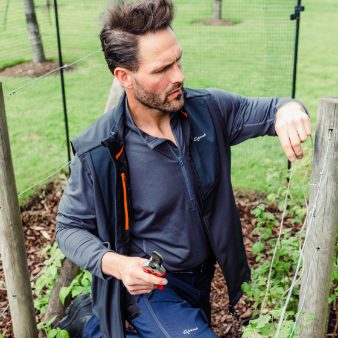Lawn issues

We had reason to be happy this week when conditions finally enabled us to cut the grass in the orchard. A few days with no rain and a nice westerly breeze made everything just dry enough to carry out the operation. We had the mower on its highest setting - not so much wanting to reduce overall height but rather even-up the levels. A number of particularly lush areas put a bit of strain on the mower’s engine but it was a straightforward job and with the air temperatures just nudging into double figures, the smell of cut grass, and birds singing in the copse we almost believed summer was on its way. Almost!
The finer lawns in the flower garden didn’t receive any attention. With the underlying soil still very wet the actions of the mower would have created a mess, smearing on the turns creating opportunities for weed seeds to germinate and causing us problems further along the line.
Many of our friends are having similar problems. With the wettest February on record for nearly 200 years it’s no surprise gardeners haven’t been able to get outside. Those with terraced town houses and long thin gardens find that shade from hedges and fences prevent any sunshine - when it does appear - from drying up the surfaces. Microclimate and underlying geology can also have an effect - sometimes a positive one. A farmhouse local to us was having its lawn cut back in January. With an open site and brashy soil the surfaces were drying out very quickly. They’re on their third cut of the year already.
Another friend found conditions were just right but the sward was too long for their mower to cut. Luckily the ride-on mower reserved for use in the meadow was squeezed through he garden gate and gave a rough cut enabling them to get their regular mower out in a week or two’s time.







